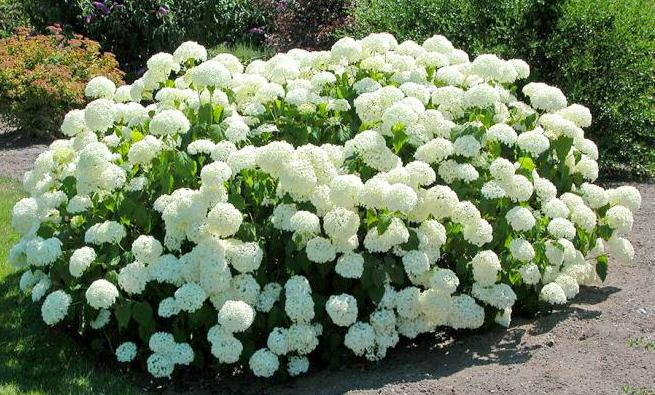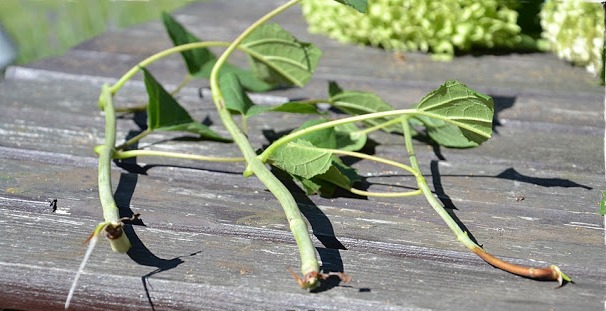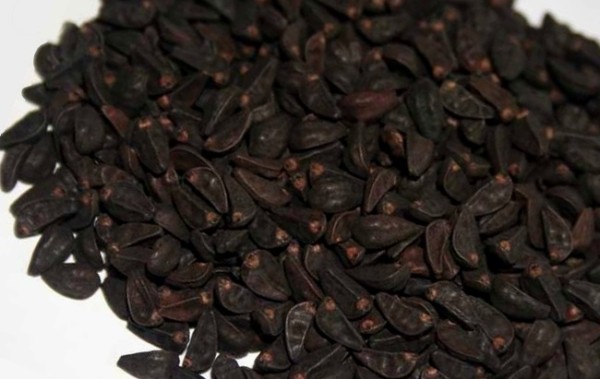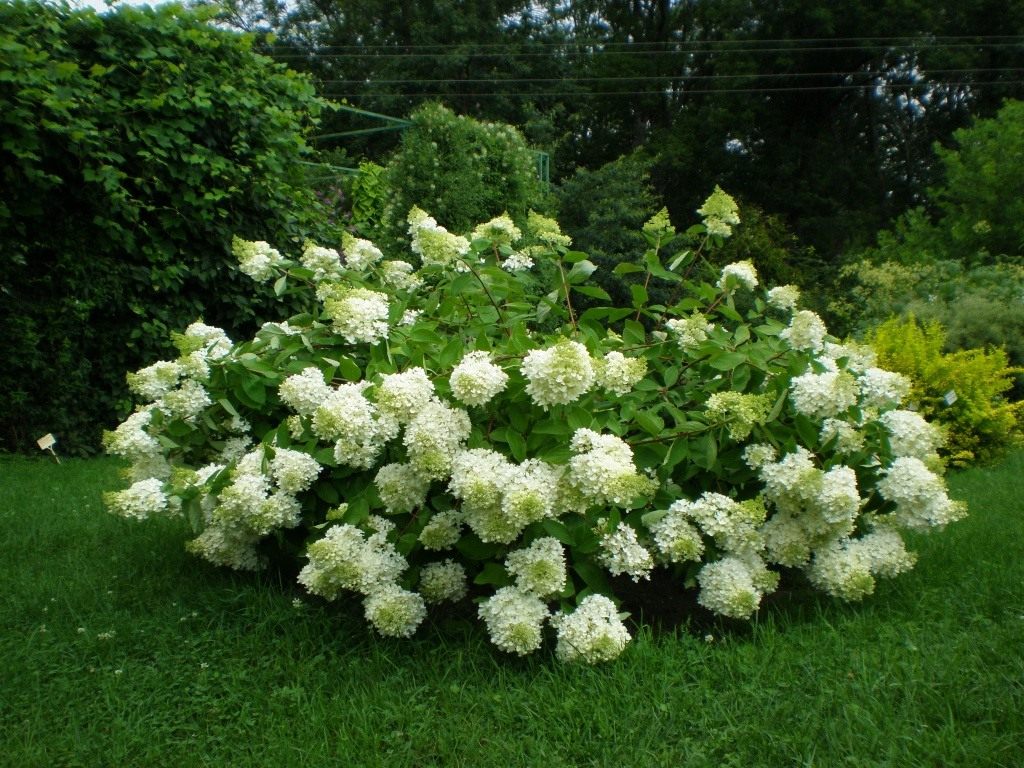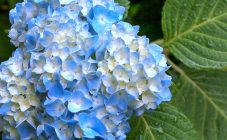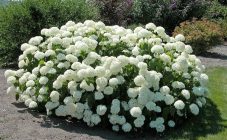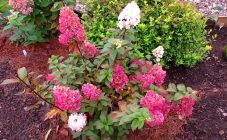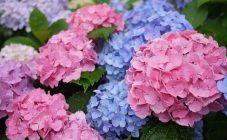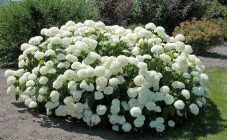Content:
Hydrangea is a shrub ornamental plant that belongs to the Hortensia family. The birthplace of culture, depending on the species, is North America, Japan or China.
Hydrangea owes its beautiful name to a Roman princess, which means “a vessel of water”.
Hydrangea is an elegant garden plant that captivates everyone with the beauty of its lush flowers. She is a favorite of gardeners and landscape designers, able to decorate any corner with herself. Especially when you consider the fact that the plant blooms almost all summer, until late autumn. In addition, the flower is not whimsical to care for, which allows you to grow it at home, in summer cottages, flower beds, in parks.
The only weak point of the hydrangea, given the conditions of central Russia, is the low winter hardiness of the culture. Provided the correct choice of a flower variety and proper care, it becomes quite real to grow it not only in the southern regions, the Moscow region and the Moscow region, but also in the Urals, in Siberia.
Despite the external similarity and similar characteristics of these species, there are several parameters that help to distinguish them.
Differences between tree and paniculate
Characteristics of panicle hydrangea:
- Originally from Japan.
- It grows in the form of a tree, up to 10 m high.
- Can be a houseplant;
- Differs in high winter hardiness;
- The flowers are large and bright.
Tree hydrangea characteristics:
- Country of origin - North America;
- Plant shape - bush up to 5 m high;
- Requires careful insulation for the winter.
- Grows outdoors;
- Flowers can be distinguished by their calmer pastel colors - white, cream, pale pink.
For the good development of hydrangea, the most suitable conditions are a comfortable air temperature - 20-30 degrees in summer (especially for large-leaved varieties), sunny or slightly shaded planting sites, regularly moistened, high-quality preparation for the winter period.
Reproduction of culture
Hydrangea reproduces quite well at home. Cuttings, bends, seeds serve as planting material. A great way to grow a tree hydrangea is to divide the bush. You can also purchase and plant a ready-made seedling.
Propagation by cuttings
One of the simplest and most effective methods. The main difficulty lies in the correct preparation of cuttings. They can be selected in the summer until the branches are completely lignified. If the cutting is harvested in June, then, in addition to the young sprout, you need to cut off part of the branch from last year. When choosing steams in July, high-quality young twigs are suitable.
Good planting material should have 2-3 buds and several leaves, which should be cut in half. You need to cut the branch at an angle of 45 degrees.
For a greater likelihood of rooting, the cuttings can be treated with a growth stimulant, a solution of indolylbutyric acid.Cuttings should be planted in a shaded place, with good fertile soil, previously dug up and abundantly moistened. Plant the hydrangea so that the lower buds are half covered with earth.
To create more comfortable conditions for germination of sprouts, you can build a mini-greenhouse from film and metal-plastic pipes. Often for this purpose, cuttings are placed under glass jars or plastic bottles. This helps to maintain high humidity and create a greenhouse effect.
Reproduction by layering
A fairly effective and simple method. To obtain a hydrangea seedling with the help of a layering, healthy, strong pagons of an adult bush are selected in spring, gently bent to the ground. A shallow elongated groove is made in the place where the layering touches the ground. A shoot is placed in it, so that its end does not touch the ground, it is in a slightly raised position. To do this, a free section of the layer can be tied to a small peg, which will serve as a support for the hydrangea. The base of the layer is covered with soil, a ball of 1-1.5 cm, well moistened.
Throughout the season, you need to regularly add soil, moisten well. In the spring of next year, a well-rooted seedling is separated from the main bush and planted in a warm shaded place for growing.
Seed propagation
Large-leaved hydrangea propagates by seeds. Oddly enough, but seeds can only be collected from small, inconspicuous flowers; large, beautiful flowers do not bear fruit.
The highest quality hydrangea seeds are from Japan or China. They can be purchased from a specialist store or website.
The optimal time for sowing seeds is February. High-quality planting material should be uniform, without damage. Before planting, the seeds are soaked in a solution of potassium permanganate or copper sulfate. Thus, the grains are disinfected, become resistant to certain diseases, and germination is accelerated.
The next stage is seed germination. To do this, the processed material is placed on a wet bandage until it swells.
Now you can start planting, having previously prepared the soil. For this, a ready-made peat mixture is suitable, or you can make the substrate yourself by mixing fertile soil with peat and sand. The container is filled with soil, seeds are sown, sprinkled on top with a small ball of sand, abundantly moistened. The container is covered with foil or glass and placed in a shaded place. The soil should be regularly moistened with a spray gun.
When the first shoots appear, the glass is removed, the shoots are moved to a warm, well-lit place.
When 2-3 true leaves appear, the shoots dive. Further, growing hydrangea seedlings practically does not differ from the usual process of growing other indoor plants. If necessary, fertilizers are applied once every two weeks: Agrovita, Iskra gold. To increase the acidity level, the soil is sprayed with acidified water.
It is possible to plant a hydrangea grown from seeds only in the second year after sowing. By that time, the sprout should already develop and strengthen well.
Features of agricultural technology
Hydrangea tree planting and care in the open field does not cause much trouble for the gardener, provided that certain rules are followed.
The process of growing a tree can be roughly divided into several stages:
- Choosing a place for planting... Hydrangea is not too whimsical to planting conditions, but there are some factors that affect the quality of its growth and flowering. The culture prefers warm, well-lit places. It is desirable that the site be protected from winds and drafts. Not shaded, but also without excess direct sunlight - it can burn the leaves of the plant. The flowers become smaller and the flowering process is not as abundant. Ideally, this is a quiet, semi-shaded place.
- Soil preparation. Hydrangea prefers light fertile soils, preferably loamy. An important difference from most other plants is that the flower loves acidic and alkaline soil. To increase the acidity, organic matter can be added to the soil: needles, sawdust, peat. Of inorganic preparations, aluminum sulfate can be used. A solution of this drug with the calculation of 30 g per bucket of water is poured over the ground around the future planting.
An interesting pattern was noticed: the higher the acidity level, the richer the color of the flowers. Florists often add special dyes to the water in order to brighten the flowers.
- Watering. Hydrangea is dependent on regular watering, especially during the hot summer. The plant should be moistened with settled water, after sunset. At the same time, do not use the sprinkling method - this can cause burns to the leaves and contribute to the development of diseases. Watering should be done gently at the root. For better moisture retention, the soil around the tree can be mulched with sawdust or straw.
- Pruning... For abundant and large flowering, remember to carry out annual pruning of pagons. Gardeners advise to prune hydrangea pagons in spring, leaving branches 20-25 cm long from the ground, where 2-3 buds are developed. In this case, weak, thin and frozen pagons are removed. In the fall, pruning is not worth it, you can only remove dry branches.
- Hydrangea garter... The branches often cannot support the weight of large hydrangea flowers, especially after rains. In order for the bush to look beautiful and the branches do not break, tying is required. There are several ways to solve the problem of how to tie a hydrangea. Currently, there are many options available for hydrangea bush holders: round, rectangular, tall, low, three or four legs. These devices are quite practical and beautiful, and fit well into the interior. But there are times when even the bush holders cannot withstand the load and break. Then you can use the trick of seasoned gardeners: the branches are neatly collected and can be tied with ribbons from spanbod (lutrasil). It is better to cut the strips 20-25 cm wide. This material is durable, springy well and does not interfere with the ventilation of the bush. In autumn and winter, the garter is visible, when the bush turns green, it becomes invisible.
Often gardeners are worried about the long absence of hydrangea flowering. It can be caused by several factors:
- The young age of the plant is less than 4 years;
- Poorly selected variety for a specific region. Heat-loving varieties do not have time to form buds in the short summer of the northern regions;
- Incorrect cropping. In the case of frequent pruning, good buds are removed;
- Freezing shoots;
- Wrong planting site - shaded, unsuitable soil composition;
- An excess of nitrogen-containing dressings - all the plant's strength goes into the green mass.
When choosing a site for planting hydrangeas, you need to decide on the neighbors of the bush. Avoid planting the flower near tall trees or plants with shallow roots.The best option for the neighborhood of a culture with a fleshy root system is boxwood, astilba.
Preparing for winter
In autumn, dry, damaged branches are removed. In the northern and eastern regions, hydrangea needs insulation. This applies not so much to the roots as to the flower buds. Therefore, the plant is covered entirely. For this purpose, you can use spruce branches or lutrasil.
Hydrangea is a real gift for beauty lovers. A beautiful and unpretentious plant will delight you with the brightness and splendor of flowers for a long time. One has only to learn how to properly care for him.
